Spiral spirit
Recent pictures of one snail on a fresh basket-flower, another on an opening firewheel, and a foursome on a dry plant have pleased some of you, so here are three more photographs from the limaciferous* Blackland Prairie in Pflugerville during the week of May 4th.
These snails are equal-opportunity climbers. In the top picture, the plant is greenthread, Thelesperma filifolium. The climbed-upon in the middle photograph is blazing star, Liatris mucronata. Finally you have a square-bud primrose, Oenothera capillifolia.
* I coined limaciferous from the roots of Latin limax ‘snail’ and ferre ‘to bear.’
The choice was between that and the English-Latin hybrid snailferous.
© 2020 Steven Schwartzman



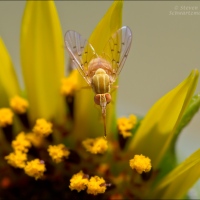
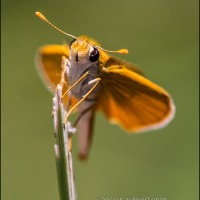
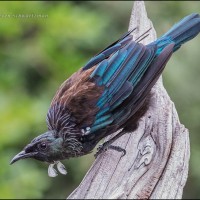
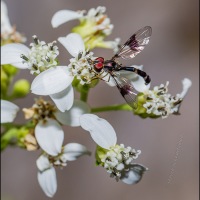
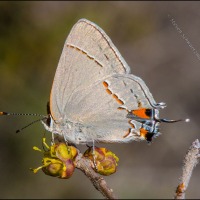
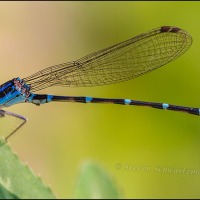
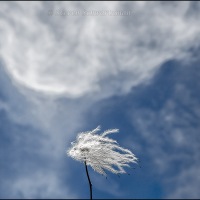
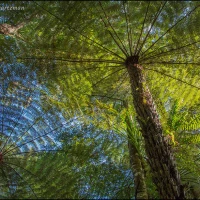

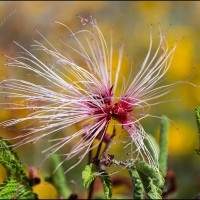
‘Snailferous’ sounds scary to a gardener, hehe! (But a good word, all the same. 🙂 )
Ann Mackay
June 7, 2020 at 5:15 AM
Not being a gardener, I have nothing to detract from my enjoyment of wild snails.
Steve Schwartzman
June 7, 2020 at 6:49 AM
I might have gone with ‘snailiferous’ as an analogue to ‘coniferous,’ but whichever word’s chosen, the photos are great. I’ve never seen a snail like the one in the middle image, other than in photographs. It strikes me that I usually see these shapes on the beach, in the form of seashells: another of those different-species-same-shape instances that I love.
shoreacres
June 7, 2020 at 5:20 AM
Normally the Latin-derived suffix -iferous gets added only to Latin roots:
https://onelook.com/?w=*ferous&ssbp=1
I was being linguistically playful with snailiferous. On the prairie in May I was mostly seeing snails like the ones in the first and last picture. At other times of the year it’s not unusual for me to find the kind in the second picture, typically on the ground and no longer living.
As Old English fæger became fair, the predecessor of snail was snægl. If that were the modern form I could’ve talked about snagging a snægl.
Steve Schwartzman
June 7, 2020 at 7:18 AM
Amazing compositions.
It looks like you placed the snails there.
rabirius
June 7, 2020 at 6:04 AM
I understand how someone who hasn’t seen this phenomenon in person might believe I’d staged the pictures. Sometimes reality is stranger than we think.
Steve Schwartzman
June 7, 2020 at 7:06 AM
beautiful exposition
MichaelStephenWills
June 7, 2020 at 6:34 AM
I give you all free passes to the Central Texas Snail Exposition.
Steve Schwartzman
June 7, 2020 at 7:04 AM
Delightful captures. The top one looks almost impossible with the weight of the shell on that slender sprig.
Lemony
June 7, 2020 at 7:34 AM
Just goes to show that plants can be stronger than they look. In particular I’m thinking of the Mexican hat:
https://portraitsofwildflowers.wordpress.com/2019/05/29/only-in-a-floral-fantasy/
If you put your hands on one of its long, slender flower stalks and pull in opposite directions you’ll find it’s hard to break the stalk apart.
Steve Schwartzman
June 7, 2020 at 7:43 AM
I am amazed at how these snails can climb these tender stalks. They must be relatively heavy with shells on their back. Have a great Sunday, Steve!
Peter Klopp
June 7, 2020 at 8:19 AM
I’ve occasionally seen the stalk that a snail is on droop from the extra weight. That may be happening a little in the third picture; the flower makes it hard to tell. I mentioned to the previous commenter that some plants with slender stalks are sturdier than they look.
Steve Schwartzman
June 7, 2020 at 8:24 AM
I think there’s bending in the first picture, too, but the snail is supported with the combined strength of several stalks.
Steve Schwartzman
June 7, 2020 at 8:30 AM
Beautiful photos, Steve. I love snails, and slugs, in spite of how destructive they can be to my garden. Shells are works of art, inspiring spirals of Nature.
Thanks for the Latin translation of “limax”. We have a slug up here, the leopard slug “Limax maximus”. It is not native. The Latin name always sounds regal to me, like a Roman emperor. 🙂
https://en.wikipedia.org/wiki/Limax_maximus
Lavinia Ross
June 7, 2020 at 10:28 AM
Limax maximus is new to me; I understand how the Latin name conjures up imperial visions, like the Circus Maximus in Rome. In shells nature conspires with geometry to produce on form of art in nature.
Steve Schwartzman
June 7, 2020 at 1:13 PM
Utterly remarkable. The snail truly seems suspended in the first shot. I understand your explanation, but on first glance it just looks impossible.
Michael Scandling
June 7, 2020 at 10:56 AM
Welcome to the Texas prairie, where the impossible happens every day. Now, if you saw an armadillo suspended in these wildflowers, that would be a different story.
Steve Schwartzman
June 7, 2020 at 1:15 PM
Clunk.
Michael Scandling
June 7, 2020 at 1:37 PM
I’ve never seen snails this size, I love the spiral designs of their shells, even if the slime trail they leave always leaves me feeling a bit ill.
Robert Parker
June 7, 2020 at 11:13 AM
As you’ve been seeing for a month, these small snails are quite common here. Some are larger, but still not close to the bigger ones we’re used to from the seashore. I expect the buoyancy that water provides allows for snails to grow larger, especially in salt water. The English word slime is actually a relative of the Latin līmus that meant the same thing, and from which the Latin for snail was derived.
Steve Schwartzman
June 7, 2020 at 1:23 PM
Gorgeous!
K.J. Ottinger
June 7, 2020 at 6:09 PM
It’s a treat.
Steve Schwartzman
June 7, 2020 at 7:58 PM
Beautiful images!
Angela Moyer
June 7, 2020 at 10:20 PM
Of intriguing little creatures.
Steve Schwartzman
June 8, 2020 at 6:23 AM
It’s surprising to me that a snail is able able to wrap its little climbing apparatus around such slender stalks to achieve such heights. I find myself wondering what the attraction is. Are they after the pollen, or do they simply long for an enhanced perspective of their environs?
krikitarts
June 8, 2020 at 2:48 AM
Some of these snails climb things that not only don’t lead to pollen, but aren’t even still alive, like dry stalks. I think I’ve seen snails on things that were never alive, like metal poles. I found discussions about climbing snails at
https://www.quora.com/Why-do-snails-climb-to-high-places-to-die
Steve Schwartzman
June 8, 2020 at 6:34 AM
I remember that I’ve heard of the brain parasites, but had managed to forget. Thanks so much for the reminder.
krikitarts
June 8, 2020 at 4:16 PM
Sure thing. The parasites haven’t hit my brain yet.
Steve Schwartzman
June 8, 2020 at 4:49 PM
Great finds and captures. Don’t know that I have ever noticed snails clinging onto plants when I am out and about. Are there certain places where this happens?
denisebushphoto
June 8, 2020 at 1:33 PM
The greatest numbers that I’ve seen have been on the prairie in northeast Austin but I’ve also found lesser numbers in other parts of town. I don’t understand the phenomenon; I wish I knew more about it.
Steve Schwartzman
June 8, 2020 at 1:47 PM
Nice finds!!
norasphotos4u
June 8, 2020 at 8:55 PM
It was easy pickings, actually, with dozens and dozens of snails all over the property.
Steve Schwartzman
June 8, 2020 at 9:01 PM
Beauties!
artsofmay
June 9, 2020 at 6:45 PM
Agreed.
Steve Schwartzman
June 9, 2020 at 7:19 PM
Snails have never looked so good .. I agree, super compositions Steve 🙂
Julie@frogpondfarm
June 13, 2020 at 3:18 PM
I’m glad to hear that snails have never looked so good.
Steve Schwartzman
June 13, 2020 at 6:01 PM
Ah, I’m one of the snail picture-lovers, especially when they seem to be in odd places. The first two really look suspended – very cool, Steve! 🙂 Like Denise, I didn’t know snails would cling to plants this way, but a few years ago I saw the phenomenon in a field near Seattle. It was late September and there were a few of them on stalks of tall, completely dried-out plants – a common wildflower, can’t think of what it was.
bluebrightly
June 13, 2020 at 9:03 PM
Ah, so you’ve seen the phenomenon, too, and are an enjoyer of it. Welcome to the club. I photographed another snail on a plant this week but haven’t again seen the large numbers that I did at this prairie site five weeks ago.
Steve Schwartzman
June 13, 2020 at 10:12 PM
Stunned by your photos and by the snail agility course. Wonderful.
navasolanature
July 20, 2020 at 5:06 PM
Thanks. I like the way you put it: “snail agility course.” There sure were a lot of them out there.
Steve Schwartzman
July 20, 2020 at 5:23 PM
[…] well past May’s peak of limaciferousness in central Texas, the land beneath our baking sun has continued to host many a snail. Whether the […]
Austin’s still snailiferous | Portraits of Wildflowers
August 23, 2020 at 4:34 AM
These, and the images of the more recent post, are really engaging. I know we have snails around here but I very seldom see them and they are much smaller. Of course.
melissabluefineart
October 5, 2020 at 9:23 AM
Some of these pictures are very close, so the size may not be obvious. In fact most of the snails here are tiny, often as little as a quarter of an inch long. Just yesterday I was happy to photograph a tiny one on a species of native plant that I’ve hardly ever seen.
Steve Schwartzman
October 5, 2020 at 9:38 AM
OH, that explains it although I thought they looked large compared to the flower they were on.
melissabluefineart
October 6, 2020 at 8:50 AM
I may have misled you a little when I wrote “most of the snails here,” by which I meant in the Austin area, not this particular post. The snails shown in the first and last picture were bigger than the quarter of an inch I mentioned, more like a half to three-quarters of an inch.
Steve Schwartzman
October 6, 2020 at 10:30 AM
Ok yes that makes sense. I occasionally see tiny snails here but not generally up on vegetation like this. Very interesting.
melissabluefineart
October 6, 2020 at 9:34 PM
And for whatever reason, it’s common here to see snails on plants.
Steve Schwartzman
October 7, 2020 at 5:48 AM
[…] 2020 proved an out-and-out snailfest on the prairie, the prolonged freeze in February of 2021 may explain the dearth of snails […]
Little white snail on an opening firewheel | Portraits of Wildflowers
May 19, 2021 at 4:32 AM
Wonderful shots !
picpholio
May 19, 2021 at 4:46 AM
I’d never seen as many snails on plants as in the spring of 2020.
Steve Schwartzman
May 19, 2021 at 5:22 AM